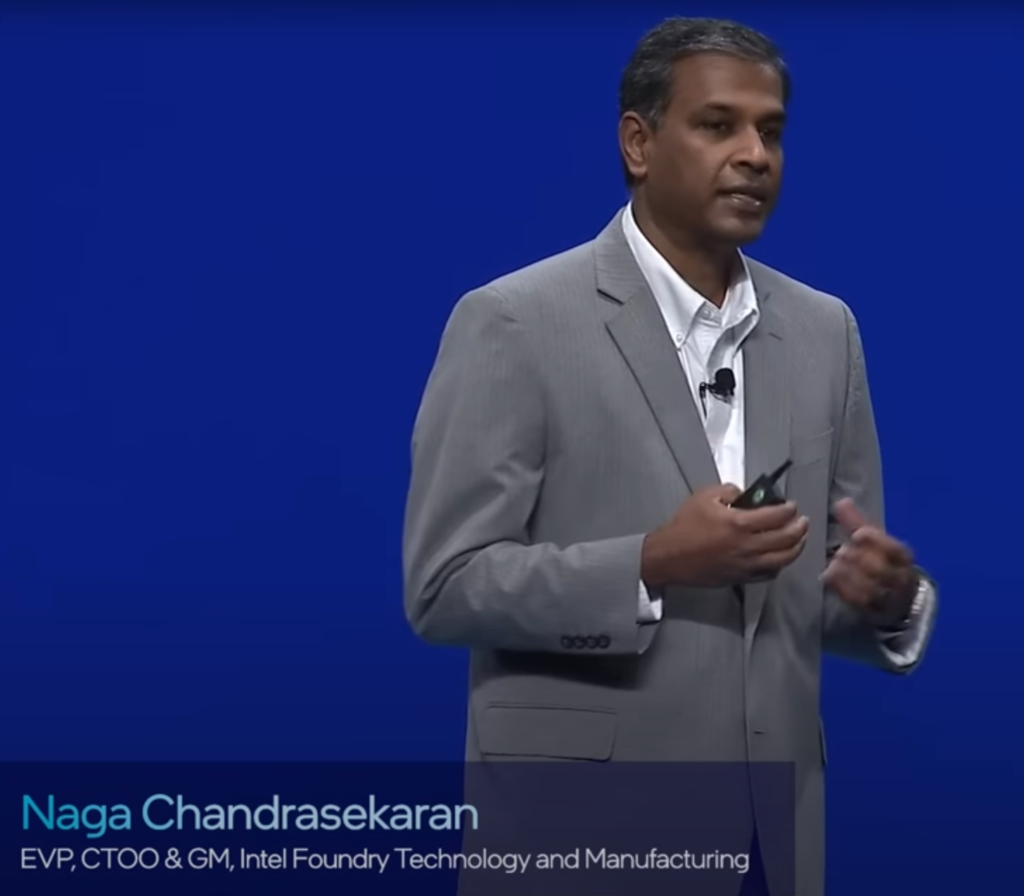 Intel recently held its annual Intel Foundry event in San Jose. Executives took the stage to speak positively, starting with Lip-Bu Tan, who was in his 6th week as CEO at Intel. The 65-year-old Lip-Bu is a well-known figure in Silicon Valley, recently a venture capitalist and before that, CEO of Cadence Design Systems. The 65-year-old Lip-Bu handed the reins of Cadence over to Anirudh Devgan. The two may have formed a mutual admiration society. Anirudh will join Lip-Bu on stage shortly and Lip-Bu will return the favor the following week at CadenceLIVE 2025.
Intel recently held its annual Intel Foundry event in San Jose. Executives took the stage to speak positively, starting with Lip-Bu Tan, who was in his 6th week as CEO at Intel. The 65-year-old Lip-Bu is a well-known figure in Silicon Valley, recently a venture capitalist and before that, CEO of Cadence Design Systems. The 65-year-old Lip-Bu handed the reins of Cadence over to Anirudh Devgan. The two may have formed a mutual admiration society. Anirudh will join Lip-Bu on stage shortly and Lip-Bu will return the favor the following week at CadenceLIVE 2025.


Particularly impressive was CTO Naga Chandrasekaran, who had as much of a grasp of Intel’s technology as Jensen Huang has of Nvidia’s. Listening to him, it felt as if Intel may be on the verge of finding its mojo.
With the new faces on stage, Intel certainly did not resemble the old Intel. The company that once held what appeared to be an insurmountable lead in computer chips, making almost all the CPUs for business computers, had all but dropped out of the microprocessor spotlight. The spotlight had moved to Nvidia, a company that started with low expectations (making chips for gamers), and had risen to the center of the AI boom.
Meanwhile, Intel was in the throes of contraction. The company had only recently announced a 20% layoff, or 22,000 employees. It would be the worst layoff in the company’s history, following the 2nd worst, the 15% layoff (15,000 people) the previous year. That the Intel Foundry event even took place is somewhat of a surprise.
From recent events, the reason Lip-Bu was hired seems obvious : trim the company so it can catch up.
I am reminded of two stories, that of unbeatable Sea Biscuit, the race horse idolized during the Great Depression and McKinsey, the consulting company. In mid-career, Sea Biscuit gained weight, was taking it easy, and had to be put on rations. In When McKinsey Comes to Town, you can read about the merciless manner by which McKinsey guts organizations. We can’t tell if Intel hired McKinsey, it just looks that way.
Lip-Bu pulls no punches with his turnaround plan. In his email posted on Intel’s site, he demands the following:
- Employees must come back to work at the office — at least 4 days a week, since many had ignored the 3-day a week mandate. Realizing many may have moved out of the horribly expensive Bay Area, he gives them until September 1 to make their life changes.
- Small teams. Tan finds it preposterous that managers were rewarded for having more members on their team. He has always been drawn to companies that accomplish the most with the fewest people.
- Too many meetings. Eliminate unnecessary meetings and reduce the size of meetings.
Intel is hemorrhaging money. The company lost $821 million in the first quarter of 2025 (Q1 2025) and a whopping $19 billion for the full year 2024. Let’s put that in perspective: Intel lost about ten times the annual revenue of all CAD companies in just one quarter.
Clearly, the bloom is off the tech rose. Many of Intel’s laid-off employees are near the company’s headquarters in the Bay Area. You may have heard of Autodesk’s 9% layoff. Meta (formerly Facebook) and Alphabet (Google) have announced layoffs and office closings in the Bay Area.
Where being a tech-bro was once a mark of distinction, it may not be a target for extinction. Tech publications report that 88% of all job losses have occurred in the tech sector.
Tech bros will not be alone walking the streets. The layoffs are bound to ripple across retail stores, restaurants and bars, apartment rentals and real estate.
We’ll look for the dead canaries in the Starbucks. During tech’s heyday, not too long ago, every Starbucks location in San Francisco was full of techies. With their MacBook’s open and AirPods in, they looks as if they were not going anywhere except to order another latte. It will be easier to get a seat now, provided your favorite location is still open. Starbucks, announced it was closing 7 stores in October 2023.
